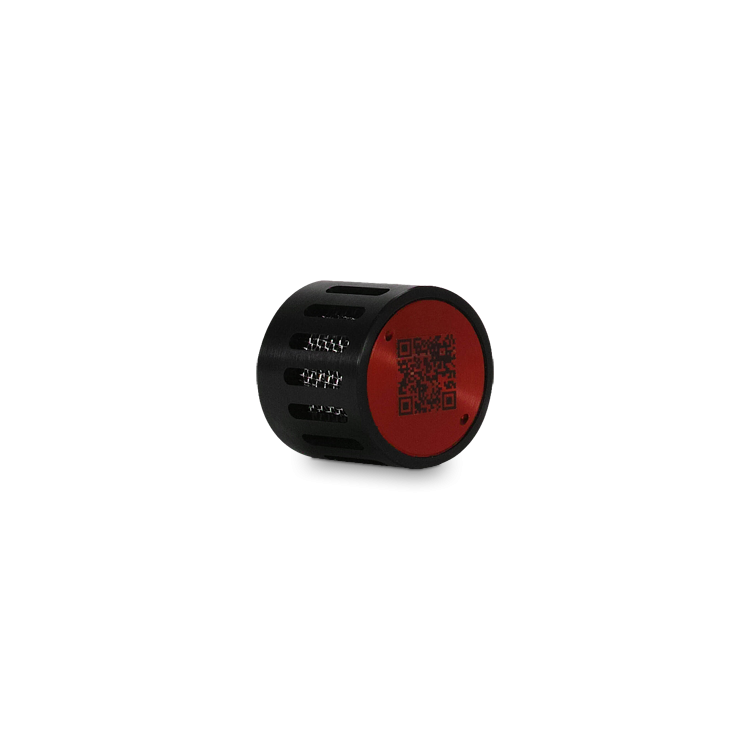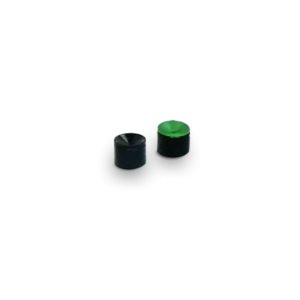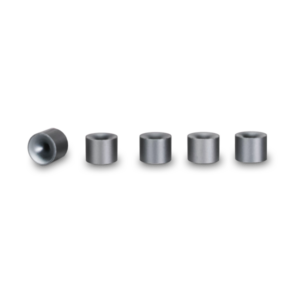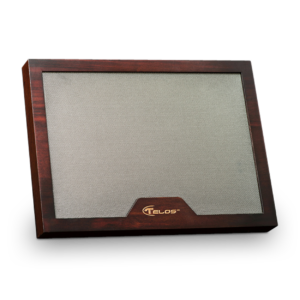Synergistic Research
Atmosphere Tuning Module
Red
Incl. 21 % TAX € 545.00
30 Day money-back guarantee
- Also applicable as a stand alone unit
- Faster resonator for enhanced detail and air
- Transforms sun radiation into something beneficial for your audio/video
- Works best in conjunction with other UEF SR products
- Dimensions 4.4×3.8 cm / 1.75×1.5″
High-Tech improvement with or without a SR Atmosphere
The Atmosphere control scenes of the Red ATM will favor rooms that are well sorted with Synergistic Research HFT’s or UEF Acoustic Panels and with systems utilizing Synergistic Research UEF products including cables, power conditioning, and isolation platforms.
An astounding transformation of your system’s musical presentation occurs simply by placing a Red Atmosphere Tuning Module (ATM) on or around your speakers. How can such a small thing cause such a grand improvement? All frequencies are related to and interconnected with each other and positively affected by the oscillating ATM excited by sound waves within your room. The walls of your room will fall away as you begin to hear spacial queues and low level ambient information start to surround you, while any harshness in your system is augmented into refined delicate musical tones.
The Sun and RF propagation on Earth
There are three major disturbances on the Sun that affect radio propagation here on Earth. Solar Flares, Coronal Holes, and Sudden Disappearing Filament (SDF). Each disturbance causes both electromagnetic radiation and ejection of material from the Sun that alters RF on Earth. What we looked at was how each of these disturbances affects our RF environment during the day vs late at night with the intention to mimic late night conditions to improve sound mid-day.
Solar Flares
Solar flares release huge amounts of energy, including sustained, high-energy bursts of radiation from VLF to X-ray frequencies and vast amounts of solar material. Most solar flares occur around the peak of the 11-year solar cycle. The first earthly indication of a huge flare is often a visible brightness near a sunspot group, along with increases in UV and X-ray radiation and VHF radio noise.
The sudden increase in X-ray energy from a large flare can immediately increase RF absorption in the Earth’s lowest ionospheric layers, sometimes causing a phenomenon known as a Sudden Ionospheric Disturbance (SID). An SID affects all HF communication on the sunlit side of the Earth and signals in the 2 to the 30 MHz range may disappear entirely. Even background noise may cease in extreme cases. When you experience a big SID, your first inclination may be to look outside to see if your antenna fell down! SIDs may last up to an hour before ionospheric conditions temporarily return to normal.
Typically, several hours after a flare erupts at the Sun, particles begin to arrive at the Earth in the form of a plasma, a highly ionized gas made up of electrons, protons and neutral particles, traveling at speeds up to 300 miles per second. Really high-energy protons may even disable satellites orbiting high above the atmosphere and seem to have a negative effect on the way our audio systems sound.
Coronal Hole
A second major solar disturbance is a so-called “coronal hole”. Matter ejected through this “hole” becomes part of the solar wind and can affect the Earth’s magnetic field.
Statistically, coronal holes tend to occur most often during the declining phase of the 11-year solar cycle and they can last for a number of solar rotations. This means that a coronal hole can be a “recurring coronal hole,” disrupting communications and degrading the subjective performance of our audio systems for several days.
Sudden Disappearing Filament
The Sudden Disappearing Filament (SDF) is the third major category of solar disturbance that can affect RF propagation on Earth. SDFs take their names from the manner in which they suddenly arch upward from the Sun’s surface, spewing huge amounts of matter as plasma out into space in the solar wind.
When the conditions are right, a flare, coronal hole or an SDF can launch a plasma cloud into the solar wind, resulting in an Ionospheric Storm here on Earth. Unlike a hurricane or a Nor’easter in New England, an ionospheric storm is not something we can see with our eyes or feel on our skin. However, we can see the indirect effects of an ionospheric storm on magnetic instruments located on the Earth’s surface because disturbances in the ionosphere are intimately related to disturbances in the Earth’s magnetic field.
During a geomagnetic storm (“geo” means Earth, in Greek), we may experience extraordinary radio noise and interference, especially at HF. You may hear solar radio emissions as increases of noise at VHF. A geomagnetic storm generally adds noise and weakens or disrupts ionospheric propagation for several days.
Solar Flares, Coronal Holes, The Sudden Disappearing Filament, and WiFi—Oh my
In a nutshell, we discovered that during the day ambient RF is stronger while the Earth’s Schumann Resonance is weaker in relation to overpowering solar and man-made radio frequencies. Typically speaking the ambient RF environment is at a higher frequency and is more complex during the day, and at a lower frequency and somewhat less complex late at night as our planet turns away from the sun. While charting Solar Flare, Coronal Hole and SDF activity we learned that the prevailing RF environment is affected by solar activity much more during the day, and less at night and this led to the discovery of specific RF environments conducive to what we perceive as good sound.
Schreibe die erste Bewertung für „Synergistic Research
Atmosphere Tuning Module
Red“ Antworten abbrechen
Ähnliche Produkte
Incl. 21 % TAX € 35.00
Incl. 21 % TAX € 83.00
Incl. 21 % TAX € 219.00
Incl. 21 % TAX € 795.00









Bewertungen
Es gibt noch keine Bewertungen.